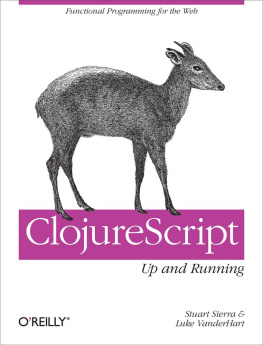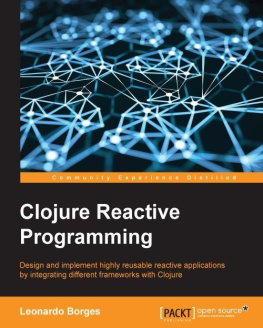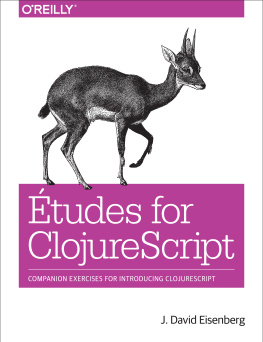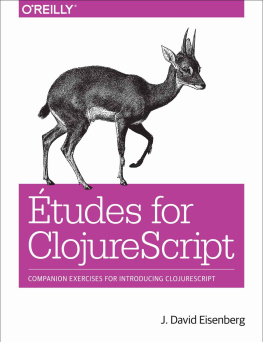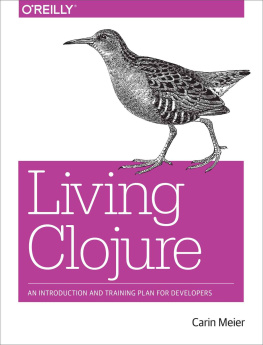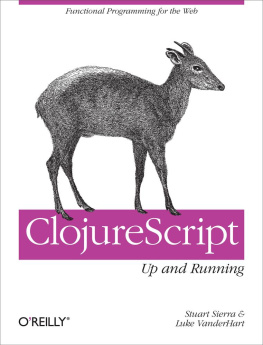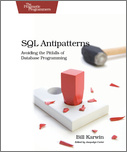Sierra Stuart - ClojureScript: up and running
Here you can read online Sierra Stuart - ClojureScript: up and running full text of the book (entire story) in english for free. Download pdf and epub, get meaning, cover and reviews about this ebook. City: Beijing;Sebastopol;CA, year: 2013;2012, publisher: OReilly Media, genre: Computer. Description of the work, (preface) as well as reviews are available. Best literature library LitArk.com created for fans of good reading and offers a wide selection of genres:
Romance novel
Science fiction
Adventure
Detective
Science
History
Home and family
Prose
Art
Politics
Computer
Non-fiction
Religion
Business
Children
Humor
Choose a favorite category and find really read worthwhile books. Enjoy immersion in the world of imagination, feel the emotions of the characters or learn something new for yourself, make an fascinating discovery.
- Book:ClojureScript: up and running
- Author:
- Publisher:OReilly Media
- Genre:
- Year:2013;2012
- City:Beijing;Sebastopol;CA
- Rating:4 / 5
- Favourites:Add to favourites
- Your mark:
- 80
- 1
- 2
- 3
- 4
- 5
ClojureScript: up and running: summary, description and annotation
We offer to read an annotation, description, summary or preface (depends on what the author of the book "ClojureScript: up and running" wrote himself). If you haven't found the necessary information about the book — write in the comments, we will try to find it.
This book will be an introduction and guide to using ClojureScript, targeted at developers who know JavaScript and are willing to learn Clojure.
ClojureScript: up and running — read online for free the complete book (whole text) full work
Below is the text of the book, divided by pages. System saving the place of the last page read, allows you to conveniently read the book "ClojureScript: up and running" online for free, without having to search again every time where you left off. Put a bookmark, and you can go to the page where you finished reading at any time.
Font size:
Interval:
Bookmark:

Beijing Cambridge Farnham Kln Sebastopol Tokyo
for more information on this offer!
Please note that upgrade offers are not available from sample content.
This book is for software developers who want to learn how to get started using ClojureScript to build web browser applications. This book will not assume any prior knowledge of ClojureScript. We do assume that you have at least a basic working knowledge of the core JavaScript language. For the sections of this book that deal with ClojureScript in a web browser, we assume you are familiar with HTML, CSS, the DOM, and how they are manipulated in JavaScript.
While this book will not assume any prior knowledge of Clojure, it is not designed to be a comprehensive reference to the Clojure programming language. We will explain Clojure language concepts in ClojureScript as they become important, but we also recommend picking up a book on Clojure for a more thorough guide to the language. The authors of this book wrote Practical Clojure (Apress, 2010) and OReilly has released Clojure Programming by our friends Chas Emerick, Brian Carper, and Christophe Grand.
This book is both a how-to guide for using ClojureScript and a tutorial on the language itself. We have arranged the chapters in what we felt was the best order for someone who is completely new to the language but wants to get started quickly. If you already know Clojure or ClojureScript and just want advice on development tools and workflow, focus on Chapters 2, 3, 7, 9, and 10. If you want to dive into the language right away, start with Chapters 4 through 6 before reading about the development process.
In this chapter, we lay out the motivation for ClojureScript: why it exists and what role it is designed to fill.
In this chapter, we work through a complete, albeit trivial, ClojureScript application. We introduce Leiningen, the lein-cljsbuild plug-in, and how to use ClojureScript in an HTML page. We save explanation for later chapters, but this chapter should be enough to get your first ClojureScript code up and running.
This chapter goes into the ClojureScript compiler in detail, explaining how it works, most of the configuration options it supports, and how it integrates with the Google Closure Compiler.
Chapters 4 through 6 cover the basics of the ClojureScript language itself. Although not a complete guide to every corner of the language, they cover most of the features that are required for everyday programming. Because ClojureScript and Clojure are so similar, we recommend books about Clojure to learn more about the language.
This chapter introduces the essential syntax and control structures of the ClojureScript language including functions, bindings, scope, and interoperation with JavaScript.
This chapter covers the primitive and composite data structures of ClojureScript, and shows how to work with them in programs. In particular, it explains ClojureScripts approach to immutability and state management.
This chapter introduces Lazy Sequences, an important data structure in ClojureScript that makes up a substantial portion of the standard library.
This chapter covers namespaces as a feature of the ClojureScript language and also explains how files are organized in ClojureScript projects. We go into detail about how the Google Closure Compiler affects the use of libraries in ClojureScript projects, and provide a detailed flowchart for determining how best to use any particular library.
This chapter introduces macros, an advanced language feature provided by ClojureScript.
This chapter covers a variety of alternative methods for working with ClojureScript code apart from the workflow we have used elsewhere in the book. We demonstrate some tools packaged with ClojureScript itself, including command-line compilation scripts and the ClojureScript Browser REPL (bREPL).
This chapter briefly demonstrates what can be achieved by combining Clojure and ClojureScript in the same application.
The following typographical conventions are used in this book:
Indicates new terms, URLs, email addresses, filenames, and file extensions.
Constant widthUsed for program listings, as well as within paragraphs to refer to program elements such as variable or function names, databases, data types, environment variables, statements, and keywords.
Constant width boldShows commands or other text that should be typed literally by the user.
Constant width italicShows text that should be replaced with user-supplied values or by values determined by context.
This icon signifies a tip, suggestion, or general note.
This icon indicates a warning or caution.
This book is here to help you get your job done. In general, you may use the code in this book in your programs and documentation. You do not need to contact us for permission unless youre reproducing a significant portion of the code. For example, writing a program that uses several chunks of code from this book does not require permission. Selling or distributing a CD-ROM of examples from OReilly books does require permission. Answering a question by citing this book and quoting example code does not require permission. Incorporating a significant amount of example code from this book into your products documentation does require permission.
We appreciate, but do not require, attribution. An attribution usually includes the title, author, publisher, and ISBN. For example: ClojureScript: Up and Running by Stuart Sierra and Luke VanderHart (OReilly). Copyright 2013 Stuart Sierra and Luke VanderHart, 978-1-449-32743-9.
If you feel your use of code examples falls outside fair use or the permission given above, feel free to contact us at .
Safari Books Online (www.safaribooksonline.com) is an on-demand digital library that delivers expert content in both book and video form from the worlds leading authors in technology and business.
Technology professionals, software developers, web designers, and business and creative professionals use Safari Books Online as their primary resource for research, problem solving, learning, and certification training.
Safari Books Online offers a range of product mixes and pricing programs for organizations, government agencies, and individuals. Subscribers have access to thousands of books, training videos, and prepublication manuscripts in one fully searchable database from publishers like OReilly Media, Prentice Hall Professional, Addison-Wesley Professional, Microsoft Press, Sams, Que, Peachpit Press, Focal Press, Cisco Press, John Wiley & Sons, Syngress, Morgan Kaufmann, IBM Redbooks, Packt, Adobe Press, FT Press, Apress, Manning, New Riders, McGraw-Hill, Jones & Bartlett, Course Technology, and dozens more. For more information about Safari Books Online, please visit us online.
Please address comments and questions concerning this book to the publisher:
Font size:
Interval:
Bookmark:
Similar books «ClojureScript: up and running»
Look at similar books to ClojureScript: up and running. We have selected literature similar in name and meaning in the hope of providing readers with more options to find new, interesting, not yet read works.
Discussion, reviews of the book ClojureScript: up and running and just readers' own opinions. Leave your comments, write what you think about the work, its meaning or the main characters. Specify what exactly you liked and what you didn't like, and why you think so.

